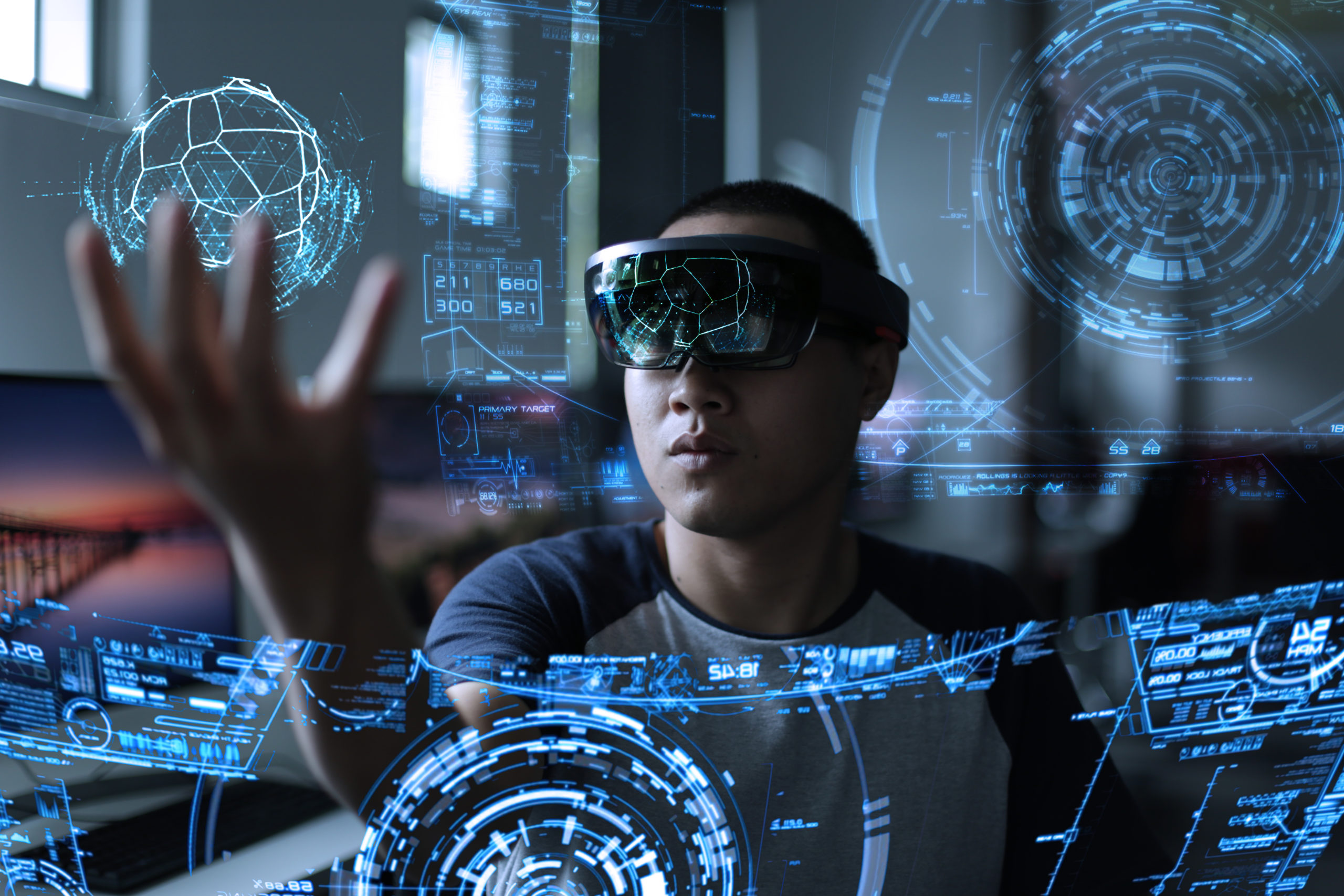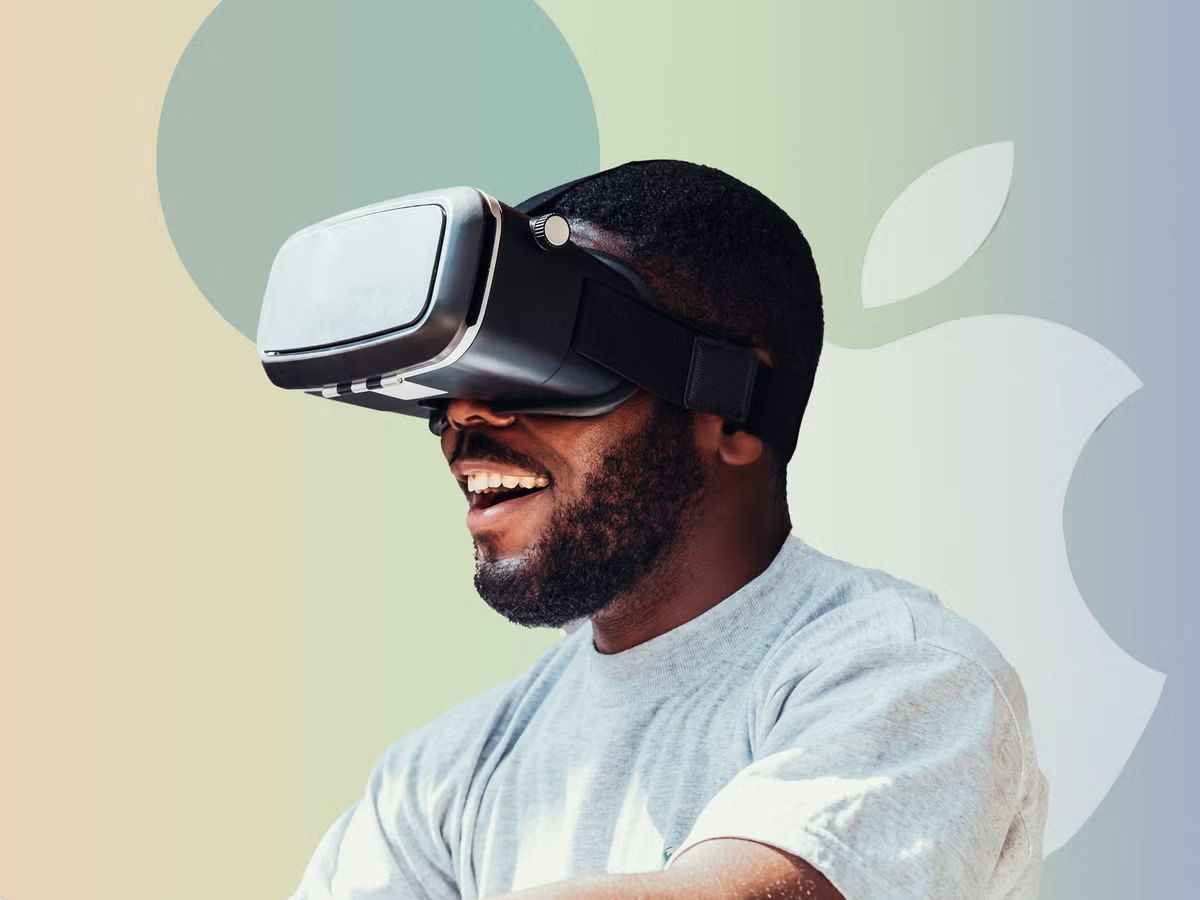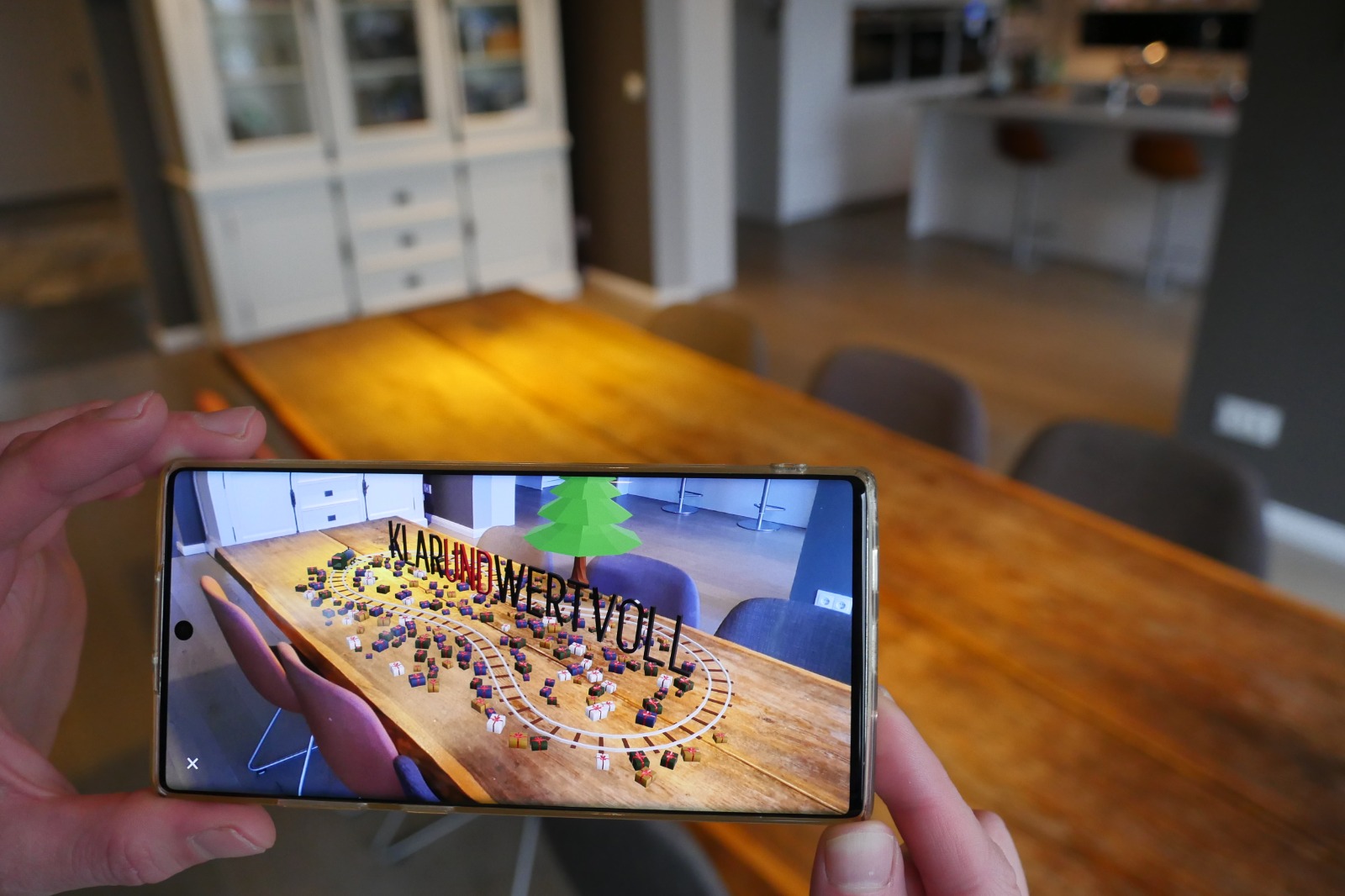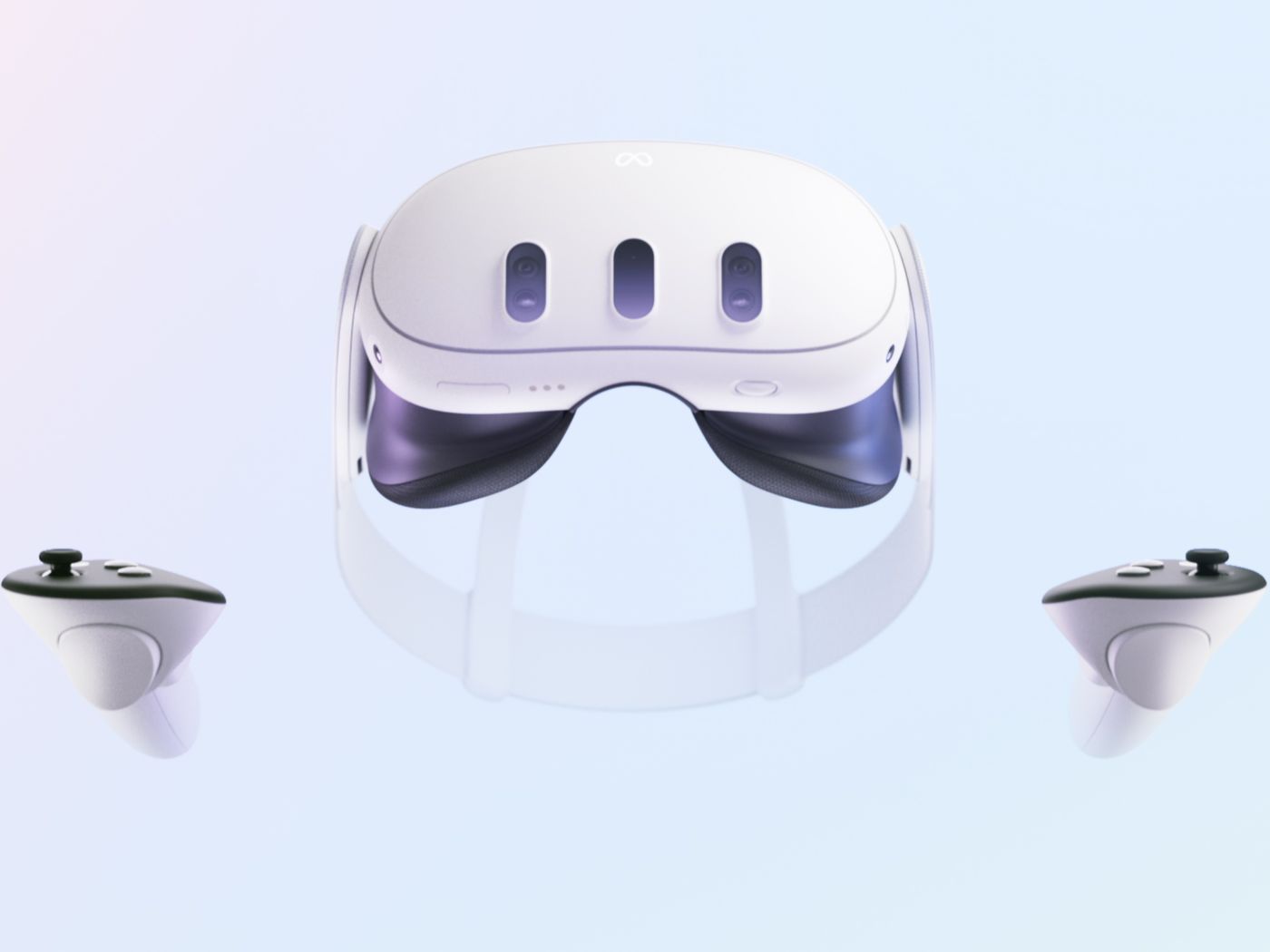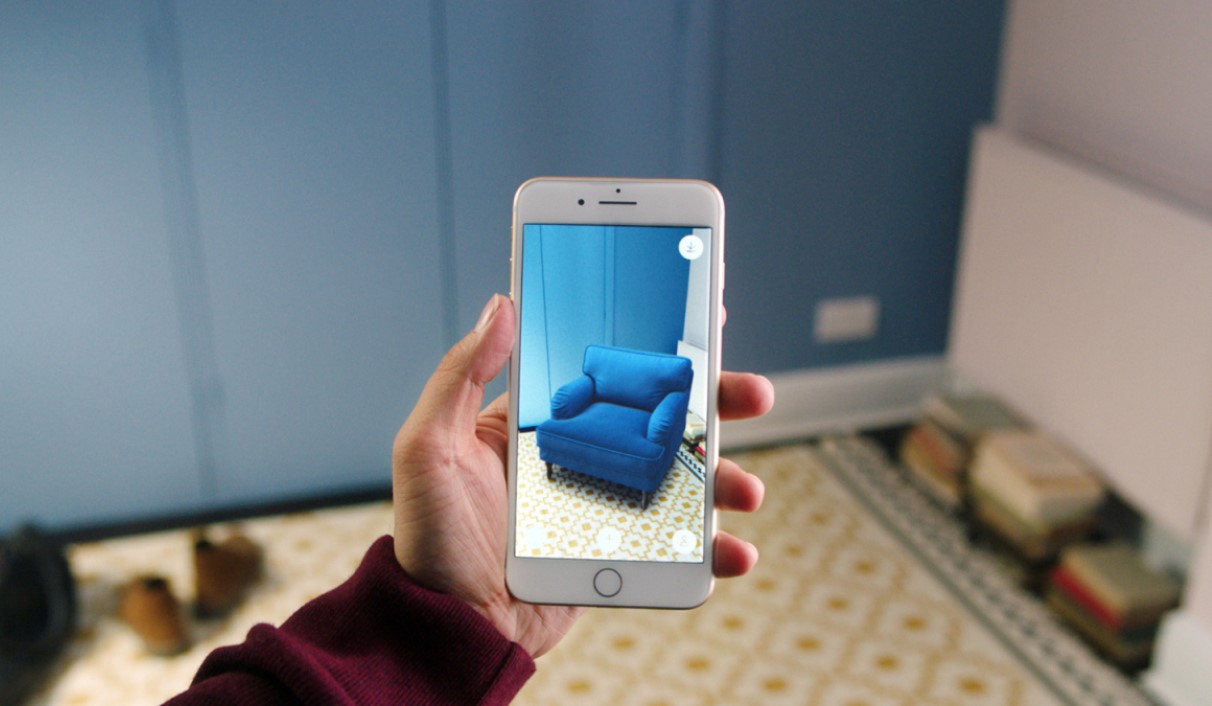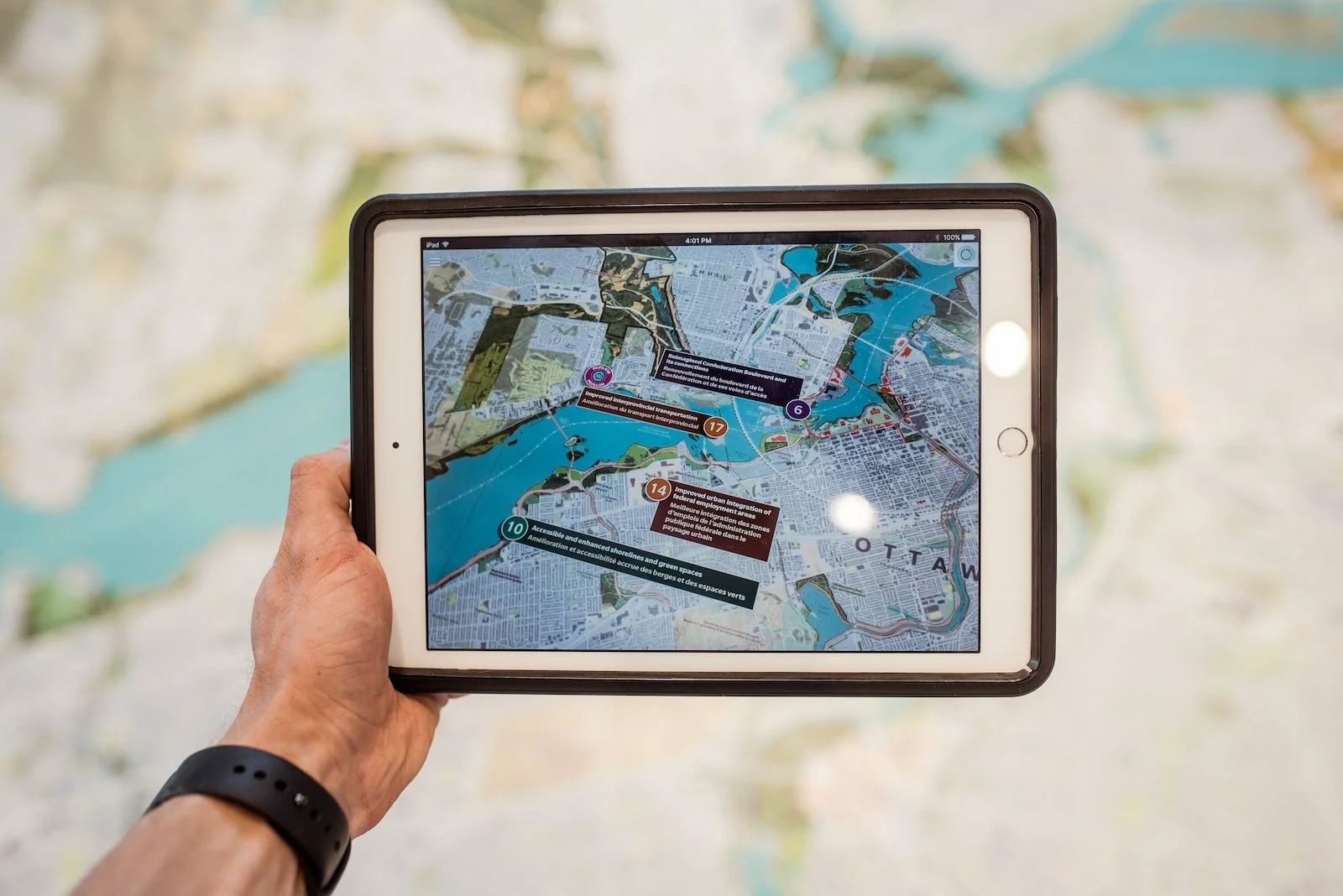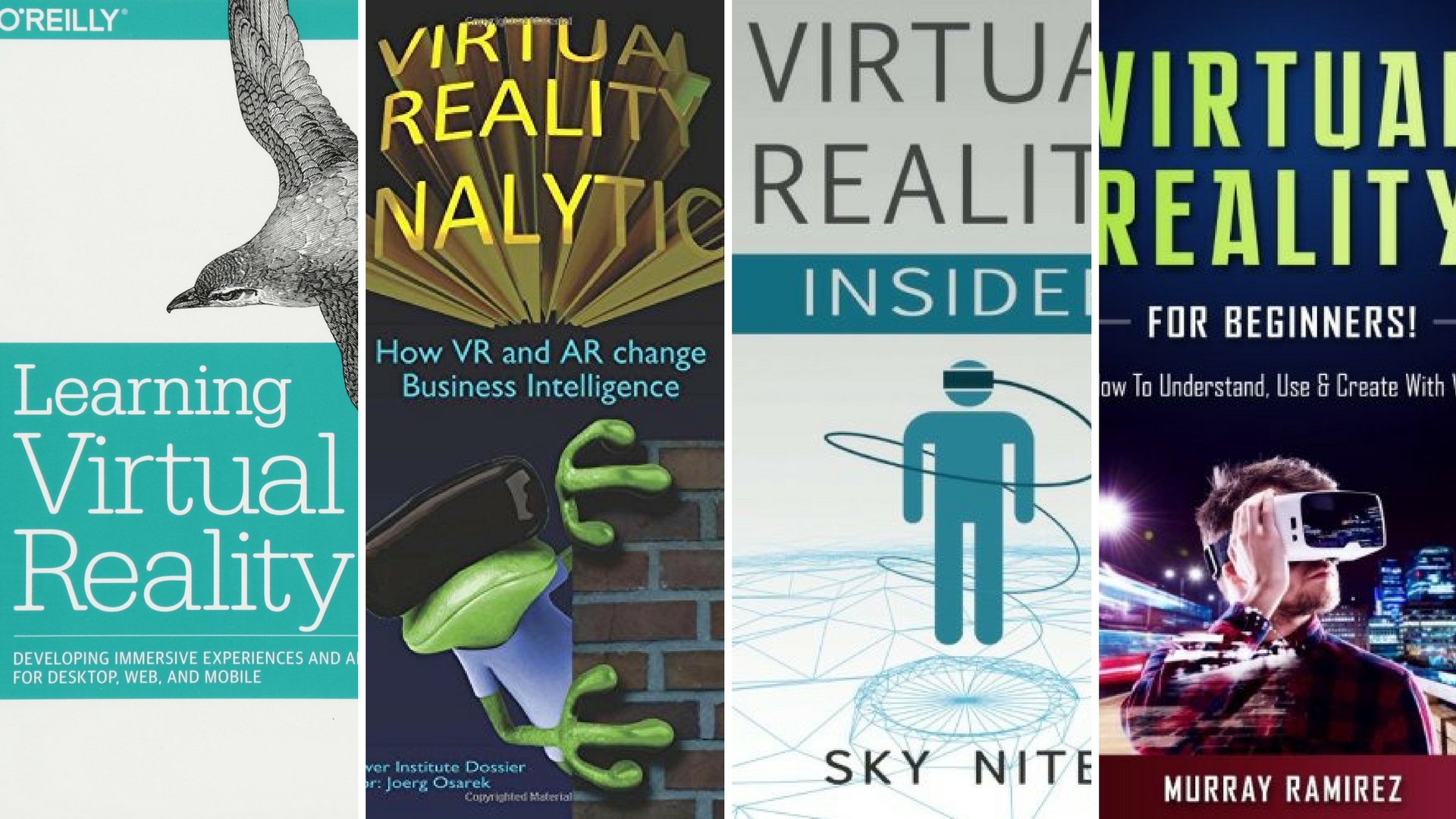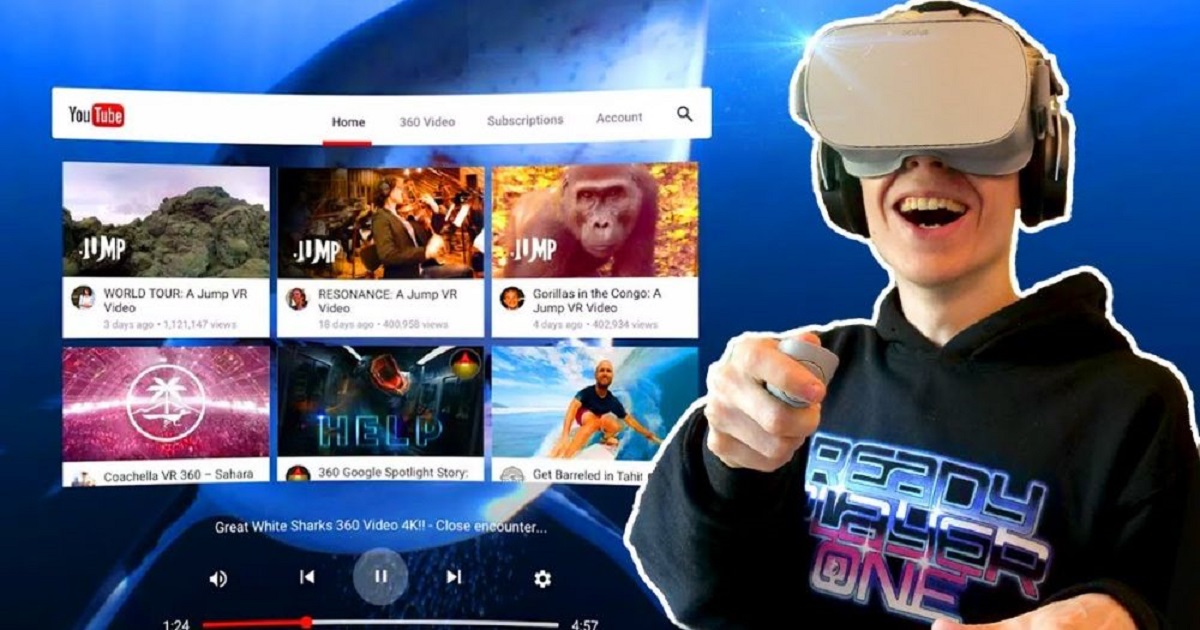Introduction
Virtual Reality (VR) has revolutionized the way we experience digital content by immersing us into a simulated environment. From gaming and entertainment to education and healthcare, VR has endless possibilities. But have you ever wondered who creates these captivating virtual worlds? Meet the virtual reality developer, the creative mind behind the magic.
Virtual reality, as the name suggests, refers to an artificial environment that is created using computer technology. It simulates a user’s physical presence in a completely different space, allowing them to interact with the virtual world using specialized equipment such as headsets and controllers. VR can transport us to fantastical realms, archaeological sites, or even the surface of Mars, all from the comfort of our living rooms.
A virtual reality developer is a skilled professional who designs and develops immersive experiences for users. They have a unique set of skills that combine programming, game development, design, and troubleshooting. With their expertise, they bring ideas to life and provide users with unforgettable experiences.
The role of a virtual reality developer goes beyond just creating visually stunning environments. They must consider factors such as user interaction, motion tracking, audio design, and performance optimization. They work closely with a multidisciplinary team, including designers, artists, audio engineers, and quality assurance testers, to ensure the final product meets the highest standards.
In this article, we will delve into the world of virtual reality development and explore the skills, responsibilities, and challenges that come with the job. Whether you are an aspiring virtual reality developer or simply curious about the field, this article will give you a deeper understanding of what it takes to create immersive virtual experiences.
What is Virtual Reality?
Virtual Reality (VR) is an immersive technology that allows users to be transported to a simulated environment, where they can interact with digital content in a realistic and engaging manner. It provides a sense of presence, making users feel as if they are physically present in a different world, even though they are still in the real world.
The primary tool for experiencing virtual reality is a VR headset, which is typically worn on the head and covers the user’s eyes, providing a 360-degree view of the virtual world. These headsets are equipped with motion sensors and tracking systems to detect the user’s movements and adjust the virtual environment accordingly. In addition to visual immersion, VR can also incorporate audio, haptic feedback, and even olfactory sensations to enhance the overall experience.
Virtual reality can be divided into two categories: fully immersive VR and augmented reality (AR). Fully immersive VR creates a completely digital environment, where users are isolated from the real world. They can explore and interact with the virtual world using motion controllers or hand tracking. On the other hand, augmented reality overlays digital elements onto the real world, allowing users to see and interact with both virtual content and their physical surroundings simultaneously.
VR technology has found applications in various industries. In the gaming industry, VR enables players to step into the game world and interact with characters and objects in a way that was previously unimaginable. It provides a level of immersion and realism that traditional gaming cannot match. VR is also being used in education, where students can virtually visit historical sites, explore the human body, or participate in interactive simulations to enhance their learning experience.
The healthcare field has embraced VR as well, using it for medical training, therapy, and pain management. VR can create realistic medical scenarios, allowing medical professionals to practice procedures without the need for live patients. It’s also being used in therapy to help patients overcome phobias or manage stress by exposing them to controlled virtual environments.
As technology continues to advance, virtual reality is becoming more accessible and mainstream. With the advent of standalone headsets and smartphone-based VR, more and more people can experience the wonders of virtual reality from the comfort of their own homes. It’s an exciting and rapidly evolving field that holds great potential for entertainment, education, healthcare, and beyond.
What Does A Virtual Reality Developer Do?
A virtual reality developer is responsible for designing and creating immersive virtual experiences that captivate and engage users. They combine their skills in programming, game development, design, and troubleshooting to build interactive environments that transport users to new realities. The role of a virtual reality developer can vary depending on the specific project and organization, but here are some common tasks and responsibilities:
1. Conceptualizing and Planning
A virtual reality developer starts by conceptualizing the virtual experience they want to create. They work closely with clients or stakeholders to understand their objectives and requirements. This involves brainstorming ideas, sketching out concepts, and creating a detailed plan for the development process.
2. Programming and Game Development
Virtual reality experiences rely heavily on software development. Virtual reality developers use programming languages such as C#, C++, or JavaScript to code interactive and immersive experiences. They develop the mechanics, interactions, and functionalities that allow users to navigate and interact within the virtual world. They also integrate audio, visual effects, and physics simulations to create a realistic and engaging experience.
3. Design and 3D Modeling
Creating visually stunning virtual worlds is a crucial aspect of virtual reality development. Developers collaborate with 3D artists and designers to create 3D models, textures, and animations that bring the virtual environment to life. They work on creating realistic lighting, visual effects, and user interfaces to enhance the overall immersive experience.
4. Testing and Troubleshooting
Virtual reality developers are responsible for testing their creations to ensure they function as intended. They conduct rigorous testing to identify and fix any bugs, performance issues, or glitches in the virtual experience. They also gather feedback from users and make necessary improvements based on their insights and recommendations.
5. Collaborating with Other Team Members
Virtual reality development is a collaborative process, involving various professionals who contribute their expertise to the project. Developers work closely with designers, artists, sound engineers, and quality assurance testers to ensure that all aspects of the experience are cohesive and aligned with the project’s objectives. Effective communication and teamwork are essential for successful virtual reality development.
6. Staying Updated with Emerging Technologies
Virtual reality is a rapidly evolving field, with new technologies and advancements emerging regularly. Virtual reality developers need to stay informed about the latest trends and developments in virtual reality hardware, software, and techniques. They continuously learn and adapt to new technologies and tools to improve their skills and deliver cutting-edge virtual reality experiences.
In summary, a virtual reality developer plays a crucial role in the creation of immersive and interactive virtual experiences. They combine technical expertise, creativity, and a passion for innovation to transport users to new realms and provide unforgettable experiences.
Education and Skills Required
Becoming a virtual reality developer requires a combination of technical skills, creativity, and a solid educational foundation. While there is no specific degree dedicated solely to virtual reality development, a strong background in computer science, game development, or a related field is typically advantageous. Here are some of the key educational requirements and skills needed to excel in this field:
Educational Requirements
1. Degree in Computer Science or Game Development: A bachelor’s or master’s degree in computer science, game development, or a similar field provides a strong foundation in programming, software development, and computer graphics. These programs often cover topics such as algorithms, data structures, computer architecture, and game design principles, which are essential for virtual reality development.
2. Courses in Virtual Reality and 3D Modeling: While not mandatory, taking courses specifically focused on virtual reality development can provide invaluable insights and practical knowledge. These courses may cover topics such as virtual reality design principles, 3D modeling, animation, physics simulations, and user experience design for virtual environments.
Technical Skills
1. Programming Languages: Proficiency in programming languages such as C++, C#, or JavaScript is essential for developing virtual reality applications. Understanding object-oriented programming concepts and having experience with game development frameworks or engines like Unity or Unreal Engine is highly advantageous.
2. 3D Modeling and Animation: Familiarity with 3D modeling software like Maya, 3ds Max, or Blender is important for creating virtual assets and environments. Knowledge of animation principles and techniques is also crucial to bring characters and objects to life within the virtual space.
3. VR Development Tools: Virtual reality developers should be familiar with the specialized tools and frameworks used in VR development. This includes software development kits (SDKs) and application programming interfaces (APIs) specifically designed for building virtual reality experiences.
4. Problem-Solving and Troubleshooting: Virtual reality development can involve complex challenges and technical issues. Strong problem-solving and troubleshooting skills are critical for identifying and resolving bugs, performance problems, and compatibility issues that may arise during the development process.
Creativity and Soft Skills
1. Creativity: Virtual reality is all about creating immersive and engaging experiences. A virtual reality developer needs to think creatively and have a strong imagination to design unique and captivating virtual worlds that resonate with the target audience.
2. Collaboration and Communication: Virtual reality development is often a team effort, requiring effective collaboration and communication skills. Virtual reality developers must be able to work seamlessly with designers, artists, and other team members, effectively conveying their ideas and aligning their work towards a common goal.
3. Attention to Detail: Creating a seamless virtual reality experience requires meticulous attention to detail. Virtual reality developers should have a keen eye for detail, ensuring that every aspect of the virtual environment, from textures and lighting to animations and sound, contributes to the overall immersion and realism.
Continuous learning, staying updated with the latest advancements in virtual reality technology, and cultivating a passion for innovation are also important traits for aspiring virtual reality developers.
Programming and Game Development
Programming and game development form a fundamental aspect of virtual reality (VR) development. A virtual reality developer must possess strong programming skills and a solid understanding of game development principles. This combination enables them to create immersive and interactive experiences within the virtual environment. Here are the key components of programming and game development in the realm of virtual reality:
1. Programming Languages
Virtual reality developers typically work with programming languages such as C++, C#, or JavaScript. These languages are commonly used in conjunction with game development engines, such as Unity or Unreal Engine, which provide a framework for building VR experiences. The ability to write efficient and optimized code is crucial for achieving smooth performance and interactivity within the virtual environment.
2. Virtual Reality APIs and SDKs
Virtual reality developers rely on application programming interfaces (APIs) and software development kits (SDKs) specifically designed for VR development. These tools provide libraries, functions, and pre-built modules that facilitate the integration of VR hardware, such as headsets and controllers, into the applications. VR APIs and SDKs offer features like head-tracking, hand-tracking, haptic feedback, and spatial audio, enhancing the overall VR experience for users.
3. Game Mechanics and Interactions
Building engaging VR experiences requires a deep understanding of game development principles and mechanics. Virtual reality developers are responsible for creating interactive environments that allow users to navigate, interact with objects, and manipulate the virtual world. They design and implement intuitive control schemes, develop physics simulations for realistic interactions, and incorporate game elements like puzzles, quests, or challenges to enhance user engagement and immersion.
4. Performance Optimization
Performance optimization is paramount in virtual reality development, as it directly impacts the user experience. Virtual reality developers employ various techniques to ensure smooth frame rates, minimize latency, and reduce motion sickness. This involves optimizing code, graphics, and animations, as well as employing efficient rendering techniques to maintain a high level of visual fidelity and responsiveness within the virtual environment.
5. User Interface Design
The user interface (UI) of a VR application is crucial for providing intuitive and seamless interactions. Virtual reality developers align UI elements with the user’s field of view and design them to be easily accessible and user-friendly within the virtual space. They implement visual feedback systems and design interface elements that are easy to identify and manipulate, maximizing user comfort and minimizing confusion.
6. Cross-Platform Development
As virtual reality platforms continue to evolve, virtual reality developers need to adapt their applications to be compatible with various devices and platforms. This requires cross-platform development skills, allowing the VR experience to be accessed on different headsets or platforms, such as PC, console, or mobile VR. It involves addressing platform-specific considerations, optimizing performance for each platform, and ensuring a consistent user experience across different devices.
Overall, programming and game development are the building blocks of creating immersive and interactive virtual reality experiences. Virtual reality developers use their coding skills and game design expertise to craft captivating worlds that enable users to explore and interact within virtual environments.
Design and 3D Modeling
In the realm of virtual reality (VR) development, design and 3D modeling play a vital role in creating immersive and visually captivating virtual experiences. Virtual reality developers work closely with designers and 3D artists to bring the virtual environment to life. Here are the key aspects of design and 3D modeling in virtual reality:
1. Conceptualizing the Virtual Environment
Designing a virtual environment begins with conceptualization. Virtual reality developers collaborate with designers and stakeholders to envision the look and feel of the virtual world they want to create. They consider factors such as the theme, atmosphere, and user experience, and translate these ideas into a cohesive design plan.
2. 3D Modeling and Asset Creation
Virtual reality developers collaborate with 3D artists to create 3D models and assets that populate the virtual environment. This involves modeling objects, characters, and environments using specialized 3D modeling software, such as Maya, 3ds Max, or Blender. They carefully design and sculpt these models, paying attention to details such as textures, shading, and lighting to create realistic and visually appealing virtual assets.
3. Environment Design and Architecture
Designing the virtual environment itself is a crucial aspect of virtual reality development. Virtual reality developers work with designers to create realistic and visually stunning environments that resonate with the user. They ensure that the virtual landscapes, architecture, and settings align with the overall design vision, providing a sense of immersion and presence for the user.
4. Visual Effects and Animation
Visual effects and animation bring life and interactivity to the virtual world. Virtual reality developers collaborate with 3D artists and animators to incorporate visual effects, such as particle systems, physics simulations, and realistic animations, into the virtual environment. These effects add depth, dynamism, and realism to the virtual world, enhancing the user’s experience and creating a more engaging and immersive environment.
5. User Interface and User Experience Design
User interface (UI) and user experience (UX) design are critical in virtual reality development to ensure a seamless and intuitive user experience. Virtual reality developers work alongside designers to create intuitive interfaces that allow users to interact easily within the virtual space. They design UI elements to be visually appealing and logically placed within the user’s field of view, making navigation and interaction within the virtual environment seamless and immersive.
6. Optimization for Performance
Virtual reality developers need to optimize the design and 3D models for performance. This involves optimizing the polygon count, textures, and shading to ensure smooth rendering and efficient use of hardware resources. They also consider performance optimization techniques to maintain a high level of visual fidelity and interactivity while minimizing the risk of motion sickness for the user.
In summary, design and 3D modeling are crucial components of virtual reality development, enabling virtual reality developers to create immersive and visually stunning virtual experiences. Collaboration between virtual reality developers, designers, and 3D artists is essential to produce virtual environments that captivate, engage, and transport users to new worlds.
Testing and Troubleshooting
Testing and troubleshooting are critical stages in the development process of virtual reality (VR) experiences. Virtual reality developers employ rigorous testing methodologies and troubleshooting techniques to ensure that the virtual environment functions seamlessly and provides users with a smooth and immersive experience. Here are the key aspects of testing and troubleshooting in virtual reality development:
1. Functional Testing
Functional testing involves validating that all the interactive elements within the virtual environment are functioning as intended. Virtual reality developers thoroughly test the user interactions, navigation, object manipulation, and any other interactive features to ensure that users can engage with the virtual environment seamlessly. This testing helps identify any bugs or glitches that may hinder the user experience.
2. Performance Testing
Performance testing is crucial to ensure that the virtual reality experience runs smoothly on different hardware configurations. Virtual reality developers test the application on different devices and platforms, evaluating factors such as frame rate, latency, and overall performance. This testing helps identify areas where performance optimization is needed to maintain a high level of visual quality and responsiveness.
3. Compatibility Testing
As virtual reality technologies evolve, it becomes necessary to test the VR experience across different headsets, platforms, and operating systems. Virtual reality developers perform compatibility testing to ensure that the application works seamlessly on various devices and operating system configurations. They test for device-specific features, performance variations, and ensure that the experience translates consistently across different platforms.
4. User Experience Testing
User experience (UX) testing focuses on evaluating the overall quality of the VR experience from the user’s perspective. Virtual reality developers gather feedback from users and conduct usability testing to understand how users interact with the environment, identify pain points, and gauge the overall user satisfaction. This testing helps identify opportunities for improvement and fine-tuning the VR experience to enhance user immersion and engagement.
5. Bug Fixing and Troubleshooting
During the testing phase, virtual reality developers encounter bugs, glitches, and other technical issues that may disrupt the user experience. They employ advanced debugging techniques and problem-solving skills to identify and fix these issues. This may involve analyzing logs and crash reports, using debugging tools, and collaborating with other team members to resolve the problems and ensure a smooth VR experience.
6. Continuous Iteration and Improvement
Testing and troubleshooting are iterative processes that continue throughout the development cycle. Virtual reality developers iterate on the virtual environment based on user feedback, bug reports, and testing results. They incorporate improvements, fix issues, and optimize performance to ensure a polished and seamless VR experience for users.
Testing and troubleshooting in virtual reality development are crucial for delivering a high-quality and immersive experience. Through thorough testing, bug fixing, and continuous iteration, virtual reality developers strive to create virtual environments that captivate users and provide an enjoyable and hassle-free journey into the virtual world.
Collaborating with Other Team Members
Collaboration is a vital aspect of virtual reality (VR) development. Virtual reality developers work closely with a team of professionals from various disciplines to bring their virtual experiences to life. Effective collaboration ensures that all aspects of the VR project, including design, programming, art, sound, and quality assurance, come together seamlessly. Here are key aspects of collaborating with other team members in virtual reality development:
1. Designers and Artists
Virtual reality developers collaborate closely with designers and artists to create visually stunning and immersive virtual environments. They work together to conceptualize the overall design, create 3D models, textures, and animations, and ensure that the visual elements align with the project’s vision. The collaboration between virtual reality developers and designers/artists ensures a cohesive and captivating VR experience.
2. Sound Engineers and Audio Designers
Sound plays a crucial role in enhancing the immersion and realism of virtual reality experiences. Virtual reality developers collaborate with sound engineers and audio designers to create realistic and spatial audio effects. They work together to incorporate immersive audio elements, such as sound effects and background music, which synchronize perfectly with the virtual environment. This collaboration enhances the overall user experience and adds an extra dimension to the virtual reality immersion.
3. User Experience Designers
User experience (UX) designers play a critical role in virtual reality development by ensuring that the virtual environment and interactions are intuitive and user-friendly. Virtual reality developers collaborate with UX designers to design intuitive user interfaces, seamless navigation, and optimal interaction mechanisms within the virtual world. The collaboration between virtual reality developers and UX designers ensures that the VR experience is accessible and enjoyable for users.
4. Programmers and Game Developers
Programmers and game developers collaborate closely with virtual reality developers to implement the technical aspects of the VR experience. They work together to code the interactive mechanics, physics simulations, and user interactions. Collaborating with programmers and game developers ensures smooth integration between the virtual environment and the underlying systems, resulting in a seamless and immersive user experience.
5. Quality Assurance Testers
Quality assurance testers are responsible for evaluating the VR experience and identifying any issues, bugs, or usability problems. Virtual reality developers collaborate with quality assurance testers to review and test the VR application, providing valuable feedback and insights. This collaboration helps in identifying and resolving any issues before the final release, ensuring a high-quality VR experience.
6. Effective Communication and Teamwork
Effective communication and teamwork are essential for successful collaboration among team members. Virtual reality developers need to communicate their ideas, feedback, and requirements clearly to ensure that the project progresses smoothly. Collaborating with other team members requires active listening, open-mindedness, and effective problem-solving skills to address any challenges that may arise during the development process.
Collaboration is at the heart of successful virtual reality development. Working closely with designers, artists, sound engineers, UX designers, programmers, and quality assurance testers ensures that all aspects of the VR project come together harmoniously, resulting in a captivating and immersive virtual reality experience for users.
Challenges and Rewards of Being a Virtual Reality Developer
Becoming a virtual reality developer comes with its own set of unique challenges and rewards. As this field continues to evolve rapidly, virtual reality developers need to adapt to emerging technologies, overcome technical obstacles, and stay at the forefront of innovation. Here are the key challenges and rewards of being a virtual reality developer:
Challenges:
1. Rapidly Evolving Technology:
Virtual reality technology is still relatively new and rapidly changing. Staying up-to-date with the latest advancements, new devices, and software updates can be a challenge. Virtual reality developers must continually learn and adapt to evolving technologies and tools.
2. Performance Optimization:
Virtual reality experiences require high performance to maintain smooth frame rates and minimize motion sickness. Optimizing performance can be challenging, especially when dealing with complex interactions, realistic graphics, and limited hardware resources.
3. User Comfort and Movement:
Ensuring user comfort and addressing potential challenges related to movement in virtual reality can be a significant challenge. Designing navigation systems and interactions that minimize motion sickness while providing intuitive user experiences requires careful consideration and testing.
4. Cross-Platform Compatibility:
Virtual reality applications may need to be compatible with a variety of platforms and devices. Ensuring cross-platform compatibility and optimizing the experience for different hardware configurations can be a complex task, requiring thorough testing and adaptation.
5. Content Creation:
Developing engaging and immersive virtual reality content is a challenge that requires a balance of technical expertise and creative thinking. Building captivating narratives, designing compelling environments, and creating interactive elements within the virtual world can be time-consuming and demanding.
Rewards:
1. Immersive and Impactful Experiences:
One of the most rewarding aspects of being a virtual reality developer is the ability to create immersive and impactful experiences for users. Virtual reality allows developers to transport people to new worlds, foster empathy, and revolutionize various industries such as gaming, education, healthcare, and more.
2. Continuous Learning and Innovation:
Virtual reality development offers constant opportunities for learning and innovation. The evolving nature of the field means that developers need to continuously learn new technologies, tools, and techniques, fostering personal and professional growth.
3. Collaboration and Multidisciplinary Teamwork:
Working collaboratively with diverse teams of designers, artists, programmers, and other professionals is a rewarding aspect of virtual reality development. The chance to combine technical skills with creative inputs from team members results in a unique and enriching work environment.
4. Making an Impact in Different Industries:
Virtual reality has vast potential in various industries, and being a part of its development allows virtual reality developers to make a significant impact. Whether it’s creating educational experiences that facilitate learning, designing therapeutic applications for healthcare, or pushing the boundaries of entertainment, virtual reality developers have the opportunity to shape the future.
5. Pushing Technological Boundaries:
Being at the forefront of a field driven by innovation offers the reward of pushing technological boundaries. Virtual reality developers have the opportunity to explore new possibilities, experiment with cutting-edge technologies, and be part of groundbreaking advancements in VR.
While virtual reality development comes with its challenges, the rewards of creating immersive experiences, continuous learning, collaborating with diverse teams, making an impact, and pushing technological boundaries make it an exciting and fulfilling career choice.
Conclusion
Virtual reality development is a captivating and rapidly evolving field that combines technical expertise with creative thinking to create immersive and engaging virtual experiences. From designing virtual environments to coding interactive mechanics, virtual reality developers play a crucial role in shaping the future of entertainment, education, healthcare, and other industries.
Throughout this article, we have explored the various aspects of virtual reality development. We have discussed the definition and significance of virtual reality, delved into the responsibilities of virtual reality developers, and examined the necessary skills and education required to succeed in this field.
Virtual reality development encompasses programming and game development, design and 3D modeling, testing and troubleshooting, as well as collaborating with other team members from different disciplines. It requires a blend of technical skills, creativity, collaboration, and a passion for innovation.
Being a virtual reality developer comes with its own set of challenges, including keeping up with rapidly evolving technology, addressing performance optimization, ensuring user comfort, and dealing with cross-platform compatibility. However, the rewards are equally enticing. Virtual reality developers have the opportunity to create immersive experiences, continuously learn and innovate, collaborate with diverse teams, make an impact in various industries, and push the boundaries of technology.
In conclusion, virtual reality development is an exciting and fulfilling career path for those passionate about blending technology with creativity. As virtual reality continues to advance and become more accessible, the demand for skilled virtual reality developers will only continue to grow. By embracing the challenges and embracing the rewards, virtual reality developers can play a pivotal role in shaping a future where virtual experiences become an integral part of our everyday lives.







